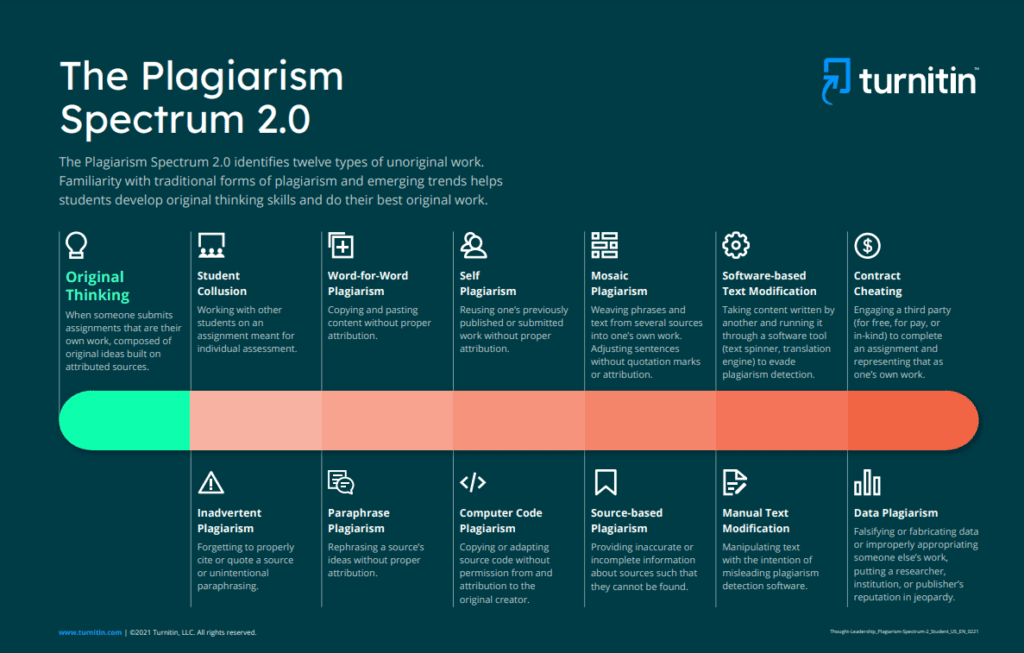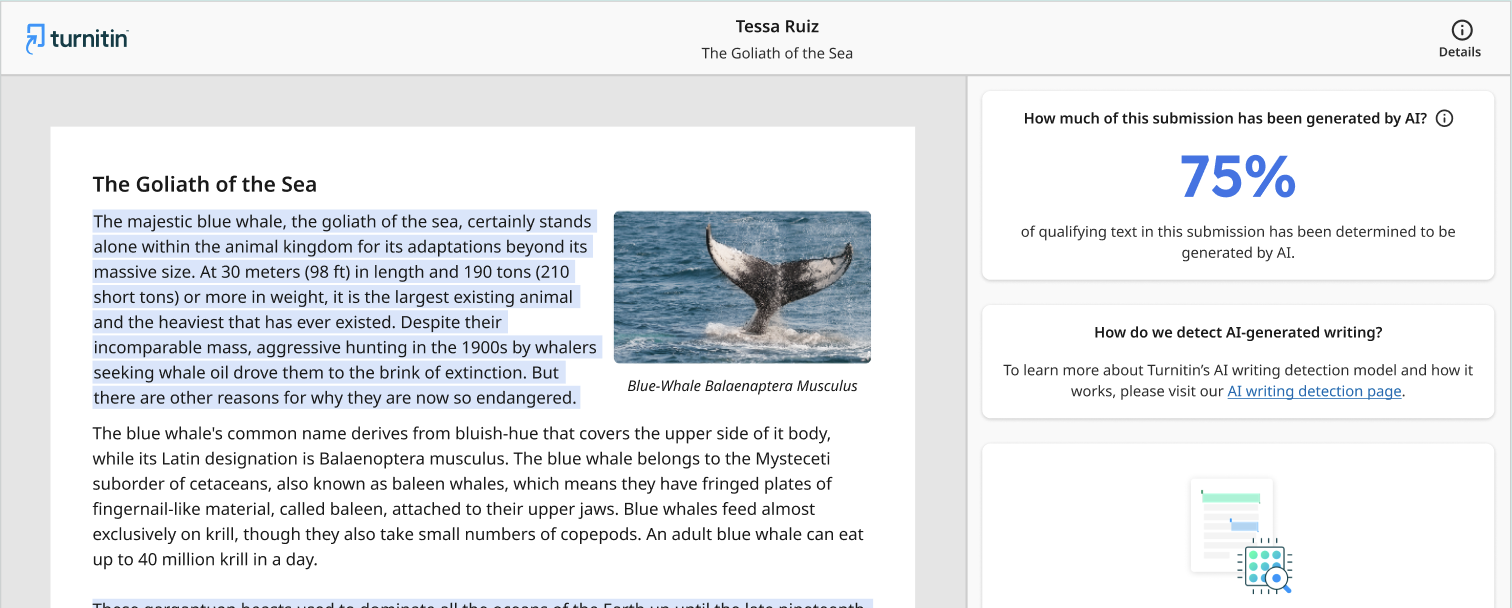Turnitin is a cloud-based plagiarism detection app permitting students, professors and academic institutions to measure similarities in their work with others’ work.
It uses Generative Pre-Trained Transformer 3 (GPT-3) as an AI detector, a Large Language Model(LLM).
Turnitin checks submitted papers for plagiarism by comparing them to several databases using a proprietary algorithm.
The article provides more information about the Turnitin AI detector and how it works.
Table of Contents Show
How Does Turnitin Model Work?
Turnitin detects plagiarism online after submitting a user’s work with another’s within its own database.
Turnitin uses Natural Language Processing (NLP) and machine learning. It detects AI writing tools such as ChatGPT and enhances the validity with a low false positive rate.
Importantly, it compares writers’ work with online databases and displays the percentage of the work developed using AI writing tools.
It employs a powerful algorithm to detect exact matches and paraphrased text, sentence patterns, and other potential plagiarism indications.
The Plagiarism Spectrum 2.0 introduced by Turnitin can detect 12 types of unoriginal work.

More importantly, the AI detection feature in Turnitin helps educators control or regulate the required inquiry, review or discussion in student’s work.
As part of Turnitin’s existing products and solutions, AI features are available within Turnitin Feedback Studio (TFS), TFS with Originality, Turnitin Originality, Turnitin Similarity, Simcheck, Originality Check and Originality Check Plus.

In the bargain, Turnitin accepts every kind of format and checks the text length up to 800 pages.
What AI Detector Does Turnitin Use?
Turnitin implements ChatGPT-3 or ChatGPT-3.5, an autoregressive language model that produces human-like text implementing deep learning.
Let’s learn more about its detectors in detail;
1. ChatGPt-3
ChatGPt-3 does not directly act as an AI detector. Conversely, it is one of the latest and most advanced language models.
It can generate human-like text that can be used to develop new AI detectors for specific tasks.
At the same time, it traces words in series and comprehends contexts and essence in the language.
Moreover, the advanced development in GPT-3 has been implemented to create a variety of AI detectors.
There’s the hope that it gets expanded in intercepting and recognizing duplicity in education and copyright encroachment.
2. ChatGPT 3.5
Similarly, GPT 3.5 is also an OpenAI, the new version of GPT-3, able to edit and insert under the names text-DaVinci-002 and code-DaVinci-002.
text-DaVinci-002
Here is more information regarding text-DaVinci-002 :
- Input: The user must give the model a text prompt in a single sentence or several paragraphs.
- Tokenization: The model separates each input word and the token.
- Encoder: The model follows ciphering the input words and tokens and creates input texts as high-dimensional numerical values.
- Attention: Based on its context and the decoder’s current condition, the attention technique determines the priority of each token in the input text.
- Decoder: The first token to be decoded is used as the starting point, and subsequent tokens are generated using the input text, attention weights, and previous output tokens.
- Output: Up until it finds the end of the sequence or until it generates a special symbol designating the end of the generated text, the model generates output text one token at a time.
code-DaVinci-002
Here is how the code-DaVinci-002 model works:
- TensorFlow: Being an open-source platform for machine learning and natural language processing, it has comprehensive tools and libraries for fabricating and utilizing models.
- Pytorch: It is a flexible, modular computing framework that is open-source and employed in creating and applying machine learning models.
- Hugging Face: It provides an extensive group of researchers and developers showcasing various projects.
- SpaCy: It maintains Python-based sustaining tasks like named entity recognition, part-of-speech tagging, and sentiment analysis.
In addition, GPT-3.5 is provided with a Browsing (ALPHA) model, which magnifies its production by embracing the potential to approach and browse online information.
Furthermore, the model aims to enhance users’ experience by providing more precise and contextually relevant information.
The Bottom Line
Turnitin is efficient in revealing and forbidding deceit occurring in the academic field.
In addition to its web-based platform and mobile app, Turnitin’s services are accessible via various devices.
I expect this article will assist and uplift you in understanding Turnitin’s AI detector.
Similarly, you can bypass Turnitin detection if you don’t want to get caught while writing your assignments using any AI.
Frequently Asked Questions
Can Turnitin Detect AI?
Turnitin has the feature of detecting AI-generated work.
Hence, it detects and highlights the words and sentences in your work. Additionally, it shows the percentage of documents created using AI tools.
How Does Turnitin Calculate Similarity?
Turnitin compares the student’s work with databases and traces the amount of matching text in a document to determine the similarity score percentage.


